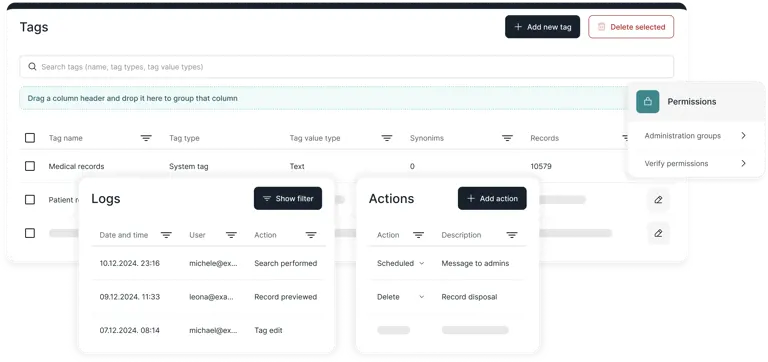Can I digitize and archive old paper medical records?

Table of Contents
Walk into any older hospital or clinic, and you'll probably find rooms stuffed floor-to-ceiling with paper files. It's a mess, honestly. Finding anything takes forever, and everyone knows that one day a pipe's going to burst or there'll be a fire, and decades of medical history will just be gone.
The healthcare industry has been talking about going digital for years, but those old paper records? They're still sitting there, taking up space and causing headaches.
Modern medical records management solutions like KORTO are designed specifically to handle this transition, but the big question isn't really whether you can digitize them – it's whether it's worth the hassle and how to do it without screwing everything up.
Why bother with all that old paper?
Paper medical records are simultaneously worthless and priceless. Worthless because they're impossible to work with efficiently. Priceless because they contain irreplaceable medical histories that could save someone's life.
Last week, a patient came into the ER unconscious. The docs needed his medical history fast – previous surgeries, allergies, medications, everything. But his records were somewhere in a storage facility across town. By the time someone drove over there, found the right box, and brought the files back, precious time had been wasted. With digital records, that information would've been available in seconds.
Storage costs are brutal too. One mid-sized hospital was paying $8,000 a month just to store old records in a warehouse. That's nearly $100,000 a year for the privilege of keeping papers in boxes that nobody can find when they actually need them.
Then there's the space issue. Medical facilities are expensive real estate. Every square foot used for file storage could be generating revenue or improving patient care instead.
The legal maze
Healthcare regulations are a nightmare, and digitizing records doesn't make them any simpler. HIPAA rules apply just as much to scanning and storing records as they do to the original papers. Maybe more, actually, because digital files can be copied and transmitted in ways paper never could.
Different states have different rules about how long you need to keep records and in what format. Some require the original paper to be preserved even after digitization. Others are fine with digital copies as long as they meet certain technical standards.
Patient consent gets tricky with older records. Records from the 1990s were created before anyone was thinking about digital privacy policies. Some facilities have had to track down patients from decades ago just to get permission to digitize their old files. Questions about who is the owner of medical records become even more complex when dealing with decades-old documentation.
The liability questions are real too. What happens if the digitization process fails and records are lost or corrupted? Who's responsible if a security breach exposes patient information that was perfectly safe sitting in a file cabinet?
Document management systems
A good document management system designed for healthcare is nothing like the filing cabinet it replaces. Modern EDMS solutions can search through millions of documents instantly, track who accessed what and when, and integrate with electronic health record systems to create seamless workflows.
The search capabilities are impressive as well. Instead of digging through alphabetical files, staff can search by patient name, medical record number, date ranges, diagnosis codes, or even specific test results. Find every patient who had a particular procedure in the last five years? Done in seconds.
Access controls are more sophisticated than physical file security ever was. Different staff members get different permissions. Nurses might see treatment records but not financial information. Billing staff get the opposite access. Administrators can see everything but only for legitimate business purposes.
Audit trails create a permanent record of who accessed which files and when. This is actually better security than paper files ever had. With physical records, there was no way to know if someone had looked at a file unless they signed it out.
The reality of going digital
Most digitization projects start with good intentions and unrealistic timelines. "We'll scan everything over the weekend" quickly becomes "This is going to take six months and cost twice what we budgeted."
Record preparation is where projects bog down. Those paper files aren't ready to scan as-is. Staples need removing. Pages need unfolding. Documents need organizing in some logical order. It's tedious work that takes way longer than expected.
Making it happen
Successful digitization projects usually start small. Pick the most frequently accessed records or focus on one department at a time. Learn what works and what doesn't before tackling the entire organization's records.
Staff training gets overlooked but it's critical. People need to learn new search techniques, understand access controls, and adapt their workflows to take advantage of digital capabilities. Skip the training, and expensive software goes unused.
Change management is just as important as technology selection. Clear communication about project benefits, realistic timelines, and ongoing support helps reduce resistance and improve adoption rates.
Vendor selection requires careful evaluation. Look for companies with healthcare experience, proper certifications, and solid references. The cheapest option usually isn't the best choice when managing medical records.
5-Second Summary
Discover why those dusty paper files in hospitals aren’t just clutter, but a ticking time bomb—and how going digital could be the lifesaving fix.
